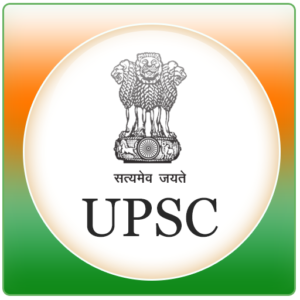Volcanoes in News
1. Mt. Sinabung - Indonesia
2. Mt. Etna - Italy
3. Mt. Mauna Kea, Mt. Mauna loa - Hawaii Island
4. Mt. Agung - Indonesia (island of Bali).
5. Mt. Merapi - Indonesia
6. Taal Volcano - Philippines
NOTE: India?s only active volcano is located in Barren island of Andaman.
News
? The Offshore Patrol Vessel (OPV) ?Sajag? got commissioned into the Indian Coast Guard.
? National Security Advisor (NSA) Ajit Doval on said that the force will have greater responsibilities in the years to come as India?s maritime zones expand to include entitlements in the extended continental shelf.
? The Coast Guard plays an important role in supporting neighbouring countries in the Indian Ocean Region.
? The concept of forming the Coast Guard was conceived after the 1971 war, when it was assessed that maritime borders are equally vital as land borders. The blueprint for a multi-dimension Coast Guard was conceived by the visionary Rustamji Committee.
Indian Coast Guard
? The Indian Coast Guard is a multi-mission organization, conducting round-the-year real-life operations at sea.
? The Indian Coast Guard was formally established on 1 February 1977 by the Coast Guard Act, 1978 of the Parliament of India.
? It operates under the Ministry of Defence.
United Nations Convention on the Laws of the Sea (UNCLOS)
? UNCLOS is the only international convention that stipulates a framework for state jurisdiction in maritime spaces.
? It provides the backbone for offshore governance by coastal states and those navigating the oceans.
About Maritime Zones:
? ?Nag Committee? was set up in 1970, to examine the growing menace of smuggling and recommended the need for a separate marine force to deal with smuggling activities.
? In 1972, the United Nations Convention on the Laws of the Sea (UNCLOS) awarded Exclusive Economic Zones (EEZ) to all coastal states.
? United Nations Convention on the Law of the Sea (UNCLOS), also known as Law of the Sea divides marine areas into five main zones namely- Internal Waters, Territorial Sea, Contiguous Zone, Exclusive Economic Zone (EEZ), and the High Seas.
Different Maritime Zones
Baseline
? It is the low-water line along the coast as officially recognized by the coastal state.
1. Internal Waters:
? Internal waters are waters on the landward side of the baseline from which the breadth of the territorial sea is measured.
? Each coastal state has full sovereignty over its internal waters as like its land territory. Examples of internal waters include bays, ports, inlets, rivers and even lakes that are connected to the sea.
2. Territorial Sea:
? The territorial sea extends seaward up to 12 nautical miles (nm) from its baselines.
? A nautical mile is based on the circumference of the earth and is equal to one minute of latitude. It is slightly more than a land measured mile (1 nautical mile = 1.1508 land miles or 1.85 km).
? The coastal states have sovereignty and jurisdiction over the territorial sea.
? These rights extend not only on the surface but also to the seabed, subsoil, and even airspace.
3. Contiguous Zone:
? The contiguous zone extends seaward up to 24 nm from its baselines.
? It is an intermediary zone between the territorial sea and the high seas.
? The coastal state has the right to both prevent and punish infringement of fiscal, immigration, sanitary, and customs laws within its territory and territorial sea.
?, Unlike the territorial sea, the contiguous zone only gives jurisdiction to a state on the ocean?s surface and floor. It does not provide air and space rights.
4. Exclusive Economic Zone (EEZ):
? Each coastal State may claim an EEZ beyond and adjacent to its territorial sea that extends seaward up to 200 nm from its baselines.
? Within its EEZ, a coastal state has:
> Sovereign rights for the purpose of exploring, exploiting, conserving and managing natural resources, whether living or nonliving, of the seabed and subsoil.
> Rights to carry out activities like the production of energy from the water, currents and wind.
? Unlike the territorial sea and the contiguous zone, the EEZ only allows for the above-mentioned resource rights. It does not give a coastal state the right to prohibit or limit freedom of navigation or overflight, subject to very limited exceptions.
Pradhan Mantri Garib Kalyan Ann Yojana📚
Militarisation of the Arctic
Why in News?
13 states have started distributing foodgrains under the Pradhan Mantri Garib Kalyan Ann Yojana (PMGKAY)
Key Highlights
✨On April 23, the government had announced its decision to restart the PMGKAY to provide free-of-cost additional 5 kg foodgrains per person per month to the beneficiaries, who are covered under the National Food Security Act, 2013 (NFSA, 2013) over and above their monthly entitlement for two months, May and June.
✨However, the new version of the PMGKAY lacks one of its important components?free-of-cost 1 kg pulses per month to each household covered under the NFSA.
Background
✨The PMGKAY was first announced by Finance Minister Nirmala Sitharaman as part of the government?s Rs 1.70 lakh crore relief package under ?Pradhan Mantri Garib Kalyan Yojana for the poor to help them fight the battle against coronavirus? on March 26, 2020.
✨Initially, the scheme was for three months ? May, June and July ? but later it was extended till November 2020.
✨The Centre had also launched a separate scheme to provide free 5 kg foodgrain per person per month to stranded migrants for two months.
✨However, the ministry has ruled out the possibility of a similar scheme this time.
About One Nation One Ration Card Scheme
✨Under the scheme, public distribution system (PDS) beneficiaries will be able to draw ration from any biometric verification enabled fair price shop across states and Union territories covered by it.
✨According to the ministry, all states and union territories except four ? Assam, Chhattisgarh, Delhi and West Bengal ? have implemented the scheme.
January 30: World Neglected Tropical Diseases Day💎
Why in News
✨The ongoing 74th World Health Assembly declared 30th January as ?World Neglected Tropical Diseases (NTD) Day.
✨The proposal to recognise the day was floated by the United Arab Emirates. It was adopted unanimously by the delegates. The first World NTD Day was celebrated informally in 2020.
The World Health Assembly is the decision-making body of World Health Organization (WHO).
Key Points
Neglected Tropical Diseases (NTD):
✨NTDs are a group of infections that are most common among marginalised communities in the developing regions of Africa, Asia and the Americas. They are caused by a variety of pathogens such as viruses, bacteria, protozoa and parasitic worms.
✨NTDs are especially common in tropical areas where people do not have access to clean water or safe ways to dispose of human waste.
✨These diseases generally receive less funding for research and treatment than malaises like tuberculosis, HIV-AIDS and malaria.
Examples of NTDs are: snakebite envenomation, scabies, yaws, trachoma, Leishmaniasis and Chagas disease etc.
✨London Declaration on NTDs:
✨It was adopted on 30th January, 2012 to recognise the global burden of NTDs.
✨Officials from the World Health Organization (WHO), the World Bank, the Bill and Melinda Gates Foundation, representatives from leading global pharmaceutical companies as well as representatives of several national governments met at London?s Royal College of physicians to pledge to end the diseases.
WHO?s New Roadmap for 2021?2030:
✨From measuring process to measuring impact.
From disease-specific planning and programming to collaborative work across sectors.
✨From externally driven agendas reliant to programmes that are country-owned and country-financed.
NTD Scenario:
✨NTDs affect more than a billion people globally.
✨They are preventable and treatable. However, these diseases - and their intricate interrelationships with poverty and ecological systems - continue to cause devastating health, social and economic consequences.
✨There are 20 NTDs that impact over 1.7 billion people worldwide.
✨India carries the largest burden of at least 11 of these diseases, with parasitic illnesses like kala-azar and lymphatic filariasis affecting millions of people throughout the country ? often the poorest and most vulnerable.
Indian Initiatives to Eliminate NTDs:
✨The Accelerated Plan for Elimination of Lymphatic Filariasis (APELF) was launched in 2018, as part of intensifying efforts towards the elimination of NTDs.
✨A WHO-supported regional alliance established by the governments of India, Bangladesh, and Nepal in 2005 to expedite early diagnosis and treatment of the most vulnerable populations and improve disease surveillance and control of sandfly populations (Kala-azar).
✨India has already eliminated several other NTDs, including guinea worm, trachoma, and yaws.
one of the oldest stone Buddhist monuments in India stands inside an ancient Buddhist complex, situated on top of a hill in Sanchi.
The Great Stupa at Sanchi, also known as Stupa No.1, was commissioned by the Mauryan Emperor, Ashoka, in the 3rd century BCE. With a height of 54 feet and a pedestal diameter of 120 feet, it is one of the largest of its kind in India.
The grand structure still inspires today surrounded by the remains of smaller stupas, monasteries, and temples that were built as the religious community grew in the centuries after the site was founded.
TORANAS:
The Great Stupa?s four elaborately-carved Toranas (gateways), one in each direction, were erected around 35 BCE.
Elephants support the architraves above the columns, while there are delicately carved Yakshis (maidens) on each side. The beautifully carved figure of a Yakshi hanging from an architrave on the Eastern Gateway is one of Sanchi?s best-known images.
The numerous panels relate various events of the life of the Buddha. Ashoka?s life as a Buddhist, with scenes of the Buddha?s birth and another representation of the Great Departure.
Sanchi Stupa, a UNESCO World Heritage Site, a landmark structure in tracing the evolution of Indian architecture starting with the Maurya period - is 48km from Bhopal, Madhya Pradesh.

 1 like
1 like
 Create and manage your profile
Create and manage your profile Refer an author and get bonus Learn more
Refer an author and get bonus Learn more Publish any lost and found belongings
Publish any lost and found belongings Connect with the authors & add your review comments
Connect with the authors & add your review comments Join us for Free to advertise for your business or
Contact-us for more details
Join us for Free to advertise for your business or
Contact-us for more details
 Join us for Free to publish your own blogs, articles or tutorials and get your
Benefits
Join us for Free to publish your own blogs, articles or tutorials and get your
Benefits



